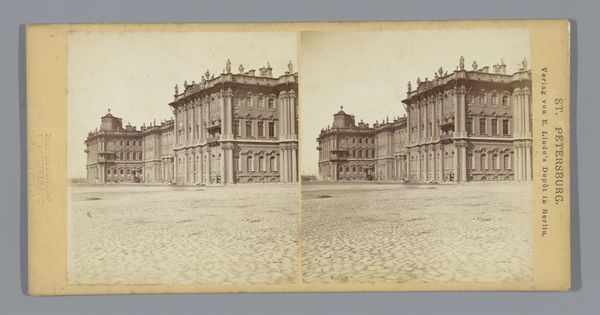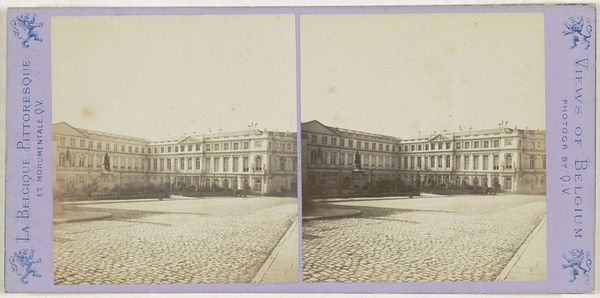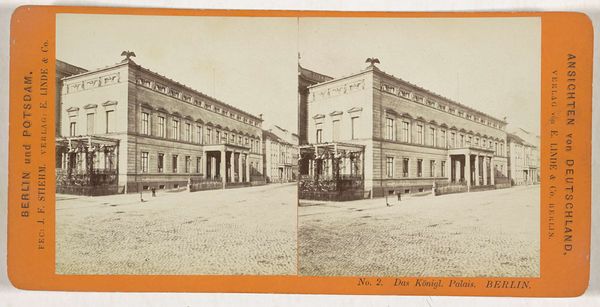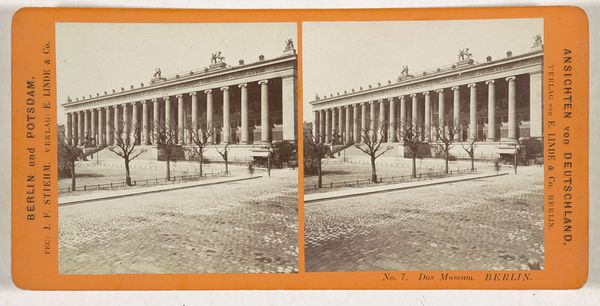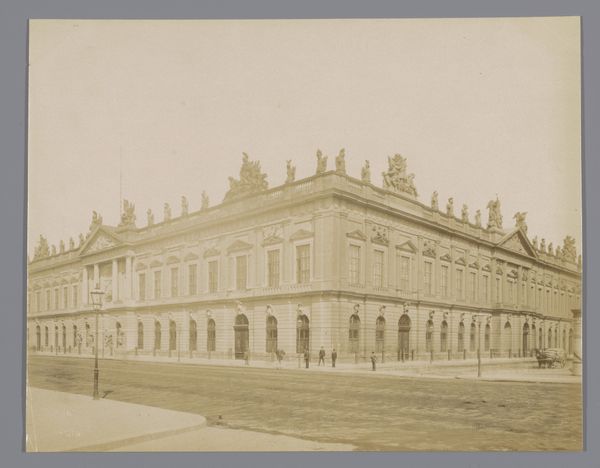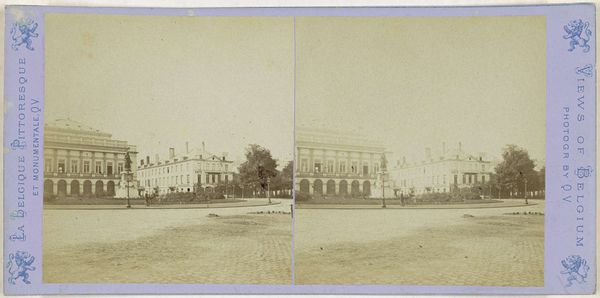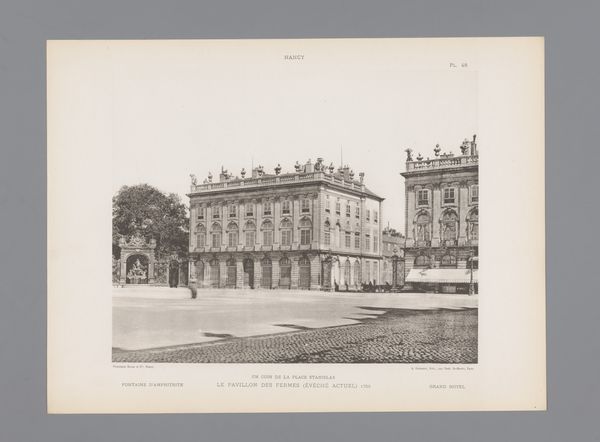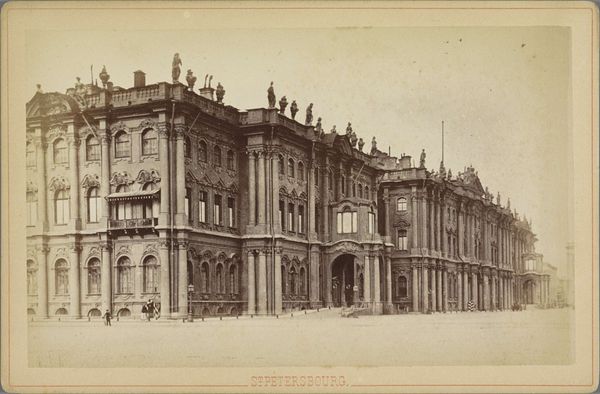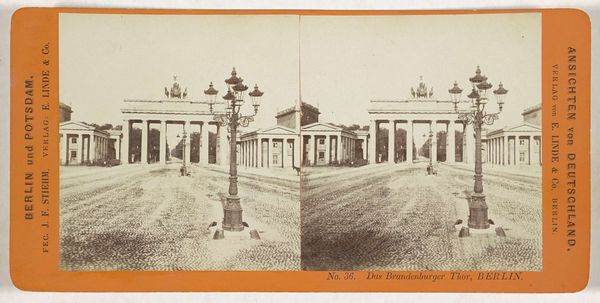
print, photography, albumen-print
# print
#
photography
#
geometric
#
neo-romanticism
#
cityscape
#
albumen-print
#
realism
Dimensions: height 86 mm, width 176 mm
Copyright: Rijks Museum: Open Domain
Curator: This albumen print presents us with the Zeughaus in Berlin, dating roughly between 1868 and 1870, through the lens of Johann Friedrich Stiehm. It's quite a stark portrayal of civic architecture. Editor: My initial reaction is a sense of somber grandeur. The stark geometry of the building combined with the vast, empty cobblestone street evokes a feeling of power, but also of a somewhat lonely authority. Curator: Indeed. This image captures a moment of intense political and social transformation in Prussia. The Zeughaus, originally an armory, served as a monument to Prussian military might. Stiehm’s photograph subtly captures this sense of national identity. Editor: I’m drawn to the symbolism of the figures adorning the roofline – classical sculptures placed atop what was essentially a storehouse of weaponry. It's a compelling, if not ironic, juxtaposition of artistic heritage and martial prowess. Is there any intention here? Curator: The placement wasn't accidental. Remember that this was taken during the rise of nation-states, where such symbolic representation was politically charged, reinforcing power through public architecture and how it connects to ideas of national narratives. The building had suffered damage, then reopened as a military museum during the time this photograph was produced. Editor: Interesting. And looking closer, one notices that the perspective almost dwarfs the people in the image. Almost suggesting that history grinds people forward like cobblestones under a chariot. Curator: Exactly. Consider how the camera, this novel technology at the time, shaped perception and understanding of Berlin in that period. It's no simple depiction, but rather an assertion of spatial control of that historical narrative. Editor: It prompts me to reflect on the endurance of symbols, even as their meanings shift and evolve through cultural reinterpretation. It’s not merely an architectural documentation but a silent commentary on power. Curator: I find that compelling. This image serves not just as an artifact of Prussian ambition, but also reveals, through its very construction, the layered complexities inherent within images and monuments as it is now regarded. Editor: Agreed. It definitely resonates in a way that transcends its initial purpose. Thank you for sharing the historical framework, it certainly amplified my appreciation of what symbols might convey!
Comments
No comments
Be the first to comment and join the conversation on the ultimate creative platform.
